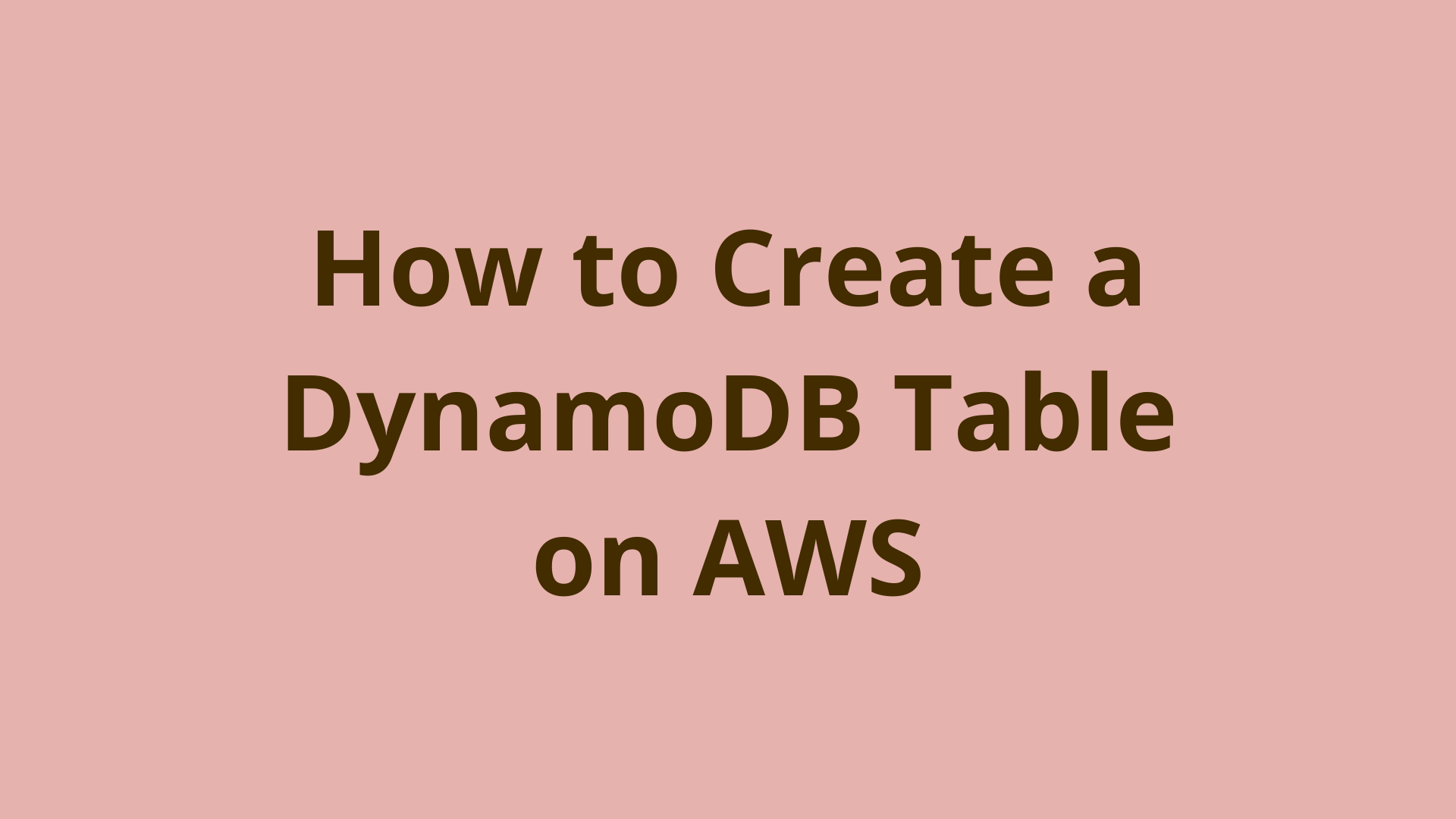

Once you have the JSON schema, creating the new table is super simple.Īssuming your JSON file is called Items.json, just run the following command:Īws -profile=via dynamodb create-table -cli-input-json file://Items.json That’s it! Here’s a sample schema which creates the table Items with two attributes, Deleted and Id First, you’ll have to remove any “Arn”, “Size”, “NumberOfDecreasesToday”, “Count”, and date/time attributes.) (Note: You won’t be able to use the exact output above to create a new table.

Remember that DynamoDB is effectively a key-value. You can also use the following command to view the schema of an existing table if you’re going to create something similar:Īws -profile=via dynamodb describe-table -table-name=MyTable Creating a new table with the dynamodb-admin GUI Clicking on ‘Create table’ takes us to a screen where we can define how our table should look. You can read the create-table documentation to get an idea of all the available options. The easiest way to create a new table is by passing a JSON file with the table schema to the AWS CLI tool. This will let you run authenticated AWS commands with aws -profile=via Step 2: Create the Table JSON File Step 1: Set Up Your AWS CLI CredentialsĬreate the file ~/.aws/config and add a block like the following:
#Local dynamodb unable to create table how to
MOTO_COOL=$(printf "$EQ_TEMPLATE" "Motorola" "Cool Phone")Īfter the operations above, if you run query.One of the great things about the AWS command-line tool is that you can do pretty much any AWS operation with it.įor today’s example, we’re going to show you how to easily create a new DynamoDB table. Here's a script I've called query.sh, which you can use to verify changes at any point during this tutorial:Īws -endpoint-url -region=us-west-2 dynamodb query \ If we now query for the record then we will see our changes reflected. SIZE_100=$(printf "$SIZE_EXP_ATTR_VAL_TEMPLATE" "100")Īws -endpoint-url -region=us-west-2 dynamodb update-item \ MOTO_COOL_KEY=$(printf "$KEY_TEMPLATE" "Motorola" "Cool Phone")
#Local dynamodb unable to create table update
For example, we can just execute a non-conditional update by setting the size on our record to be 100: KEY_TEMPLATE=$(cat < key-schema AttributeName=Company,KeyType=HASH AttributeName=Model,KeyType=RANGEĪws -endpoint-url -region=us-west-2 dynamodb put-item \ attribute-definitions AttributeName=Company,AttributeType=S AttributeName=Model,AttributeType=S \ Now we'll create a table for the purposes of this tutorial, then create a sample record to work with: #!/bin/bashĪws -endpoint-url -region=us-west-2 dynamodb create-table \ If you do not have any valid AWS credentials on your local, you will have to set some fake ones or the CLI will complain: export AWS_SECRET_ACCESS_KEY="FAKE" To create a table for your database, follow these. Start this up with: $ docker-compose up -d It can include columns and another values listed in this documentation. Here's a dynamo local container in a docker compose file: version: '3.7' When you're ready to deploy your application in production, you remove the local endpoint in the code, and then it points to the DynamoDB web service. Instead, the database is self-contained on your computer. I'll demonstrate an example that should fill the gap for most common use cases. With the downloadable version of Amazon DynamoDB, you can develop and test applications without accessing the DynamoDB web service. I covered optimistic locking in MySQL in a previous blog post, which may or may not be easier to understand based on your background.ĭynamoDB offers conditional expressions that can fulfill the same purpose for us here. Optimistic Locking is a form of concurrency control that basically aims to prevent two different threads from accidentally overwriting data that another thread has already written.



 0 kommentar(er)
0 kommentar(er)
